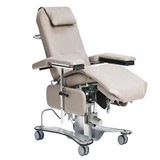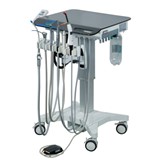Introduction
High-Intensity Electromagnetic Therapy (HIEMT) represents a significant advancement in non-invasive treatment modalities, offering compelling solutions for muscle rehabilitation and functional improvement. Initially recognised for its effectiveness in body contouring, HIEMT has now emerged as a highly effective intervention for pelvic health, specifically addressing urinary incontinence and postpartum pelvic floor dysfunction. For medical professionals, care institutions, and physicians, HIEMT presents a novel, evidence-based option to enhance patient outcomes in these critical areas.
The Pelvic Floor: An Essential Focus in Postpartum and Urological Care
The pelvic floor comprises a complex network of muscles and connective tissues that provide essential support to pelvic organs, including the bladder, uterus, and rectum. These muscles are integral to maintaining urinary and fecal continence, supporting sexual function, and facilitating childbirth. However, factors such as pregnancy, vaginal delivery, and aging can lead to significant pelvic floor muscle weakness, resulting in conditions like urinary incontinence and pelvic organ prolapse.
Postpartum women, in particular, are at increased risk for pelvic floor dysfunction. The physical demands of pregnancy and childbirth can compromise the structural integrity of the pelvic floor, leading to incontinence and other debilitating symptoms that significantly affect quality of life.
Mechanism of HIEMT: Precision in Pelvic Muscle Rehabilitation
HIEMT utilises high-intensity focused electromagnetic energy to induce supramaximal contractions in targeted muscle groups. These contractions, far more powerful than those achieved through voluntary effort, stimulate both muscle hypertrophy and neuromuscular re-education.
When applied to the pelvic floor, HIEMT effectively strengthens the musculature that supports the bladder and urethra, enhancing the structural and functional integrity of the pelvic region. For postpartum patients, this targeted approach facilitates the rapid recovery of pelvic floor strength and function, addressing both urinary incontinence and other forms of pelvic floor dysfunction.
Clinical Application of HIEMT for Urinary Incontinence
Urinary incontinence is a prevalent issue, particularly among women, and is often underreported due to the associated stigma. It can be classified into several types:
- Stress Incontinence: Characterised by involuntary urine leakage during activities that increase intra-abdominal pressure, such as coughing or exercise.
- Urge Incontinence: Marked by a sudden, intense urge to urinate, often resulting in involuntary leakage.
- Mixed Incontinence: A combination of both stress and urge incontinence, presenting a complex therapeutic challenge.
HIEMT has been shown to be particularly effective in treating these conditions by reinforcing the pelvic floor muscles, thus reducing or eliminating incontinence episodes. Clinical trials have consistently demonstrated that HIEMT therapy can lead to significant improvements in symptoms, making it a valuable addition to the therapeutic arsenal for urologists and gynecologists.
Postpartum Pelvic Floor Strengthening with HIEMT
Traditional approaches to postpartum pelvic floor rehabilitation, such as Kegel exercises, often require significant patient compliance and effort, and may not provide sufficient stimulus for meaningful muscle recovery. HIEMT offers a superior alternative by delivering controlled, high-intensity contractions that directly target the weakened pelvic floor muscles, expediting recovery and improving outcomes.
The application of HIEMT in postpartum patients has been associated with:
- Enhanced Muscle Recovery: Accelerated strengthening of the pelvic floor muscles, crucial for supporting the bladder and pelvic organs post-delivery.
- Improved Bladder Control: Significant reduction in the incidence of postpartum urinary incontinence, contributing to overall patient satisfaction and quality of life.
- Efficiency and Compliance: HIEMT sessions are time-efficient, require minimal effort from the patient, and involve no downtime, making it an ideal option for postpartum women, particularly those balancing recovery with the demands of newborn care.
Conclusion
For healthcare providers, including obstetricians, gynecologists, urologists, and physical therapists, High-Intensity Electromagnetic Therapy (HIEMT) offers a cutting-edge, non-invasive solution for managing urinary incontinence and postpartum pelvic floor rehabilitation. Its ability to deliver targeted muscle strengthening and neuromuscular re-education presents a significant advancement in patient care, particularly for those struggling with pelvic floor dysfunction after childbirth.
As the clinical evidence continues to build, integrating HIEMT into treatment protocols offers a promising pathway to improve patient outcomes, enhance recovery, and provide a higher standard of care in pelvic health management.










-160x160-state_article-rel-cat.png)




-160x160-state_article-rel-cat.png)
























